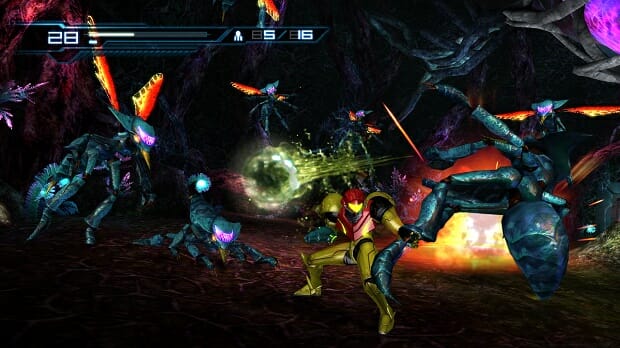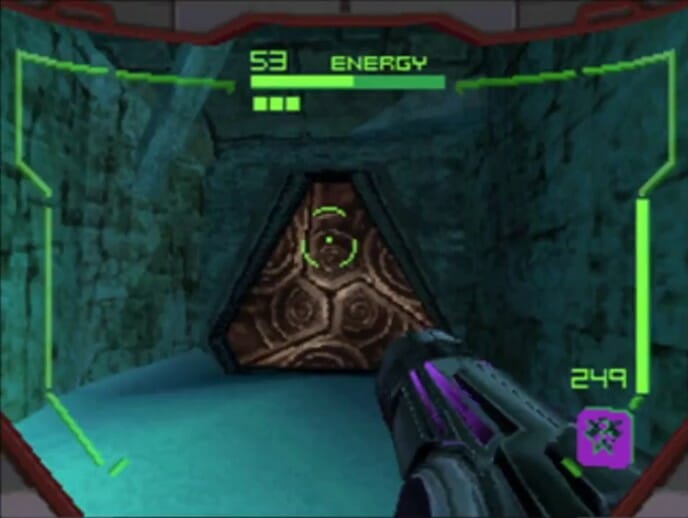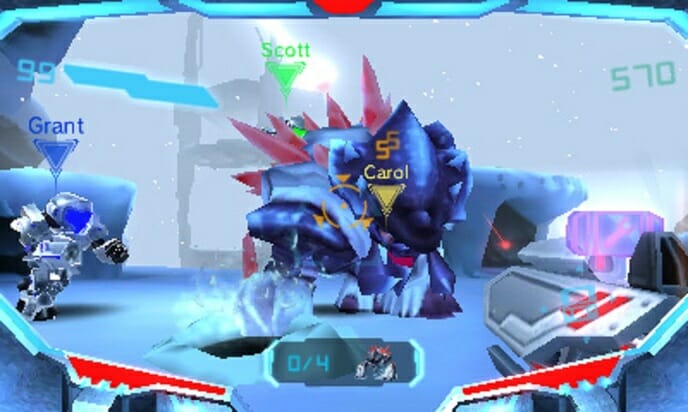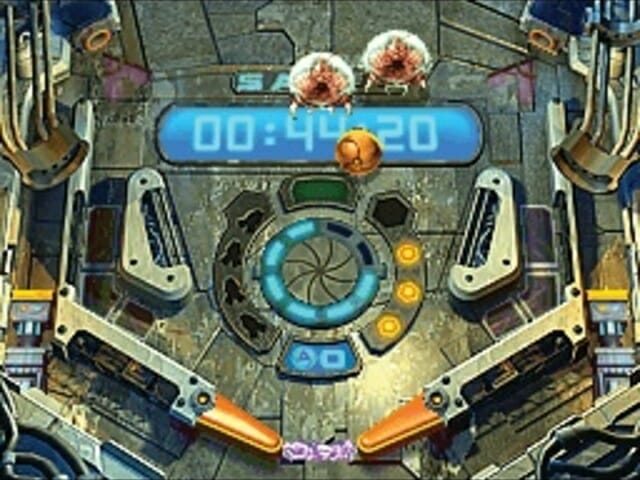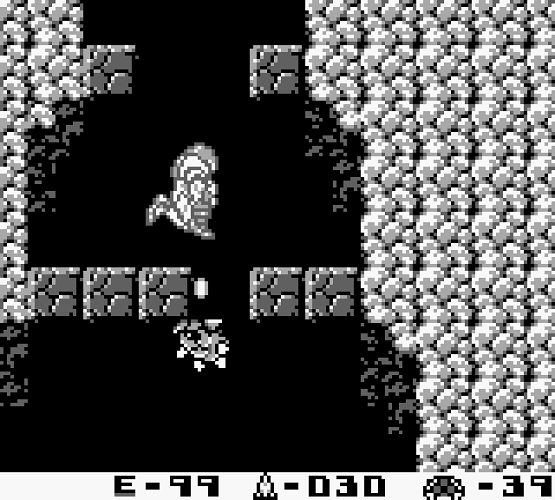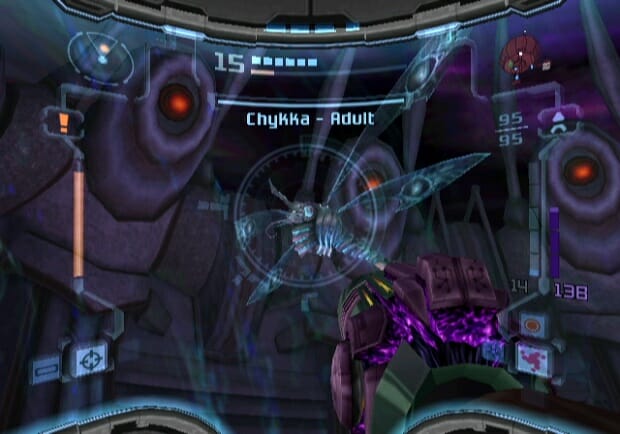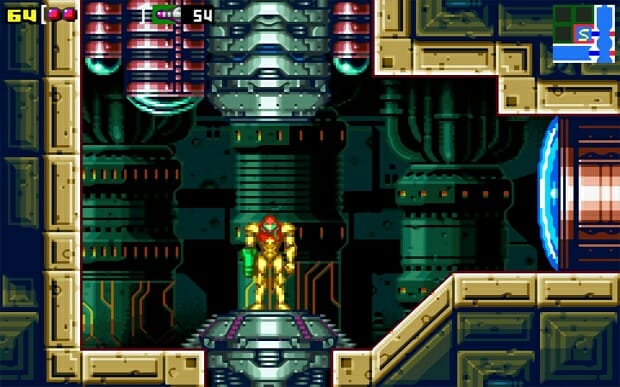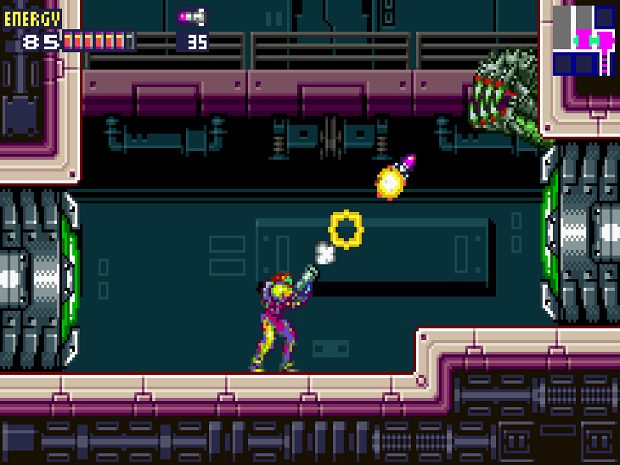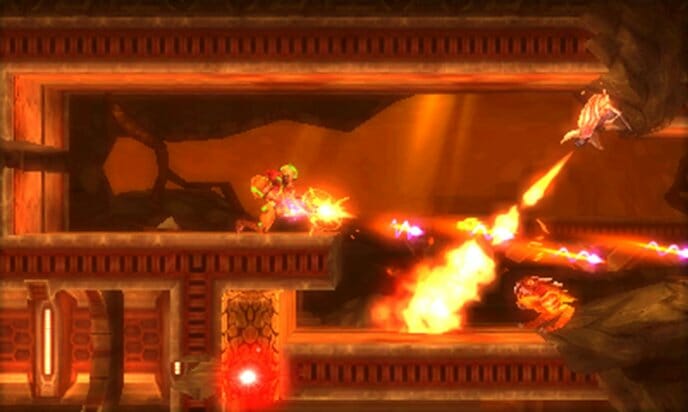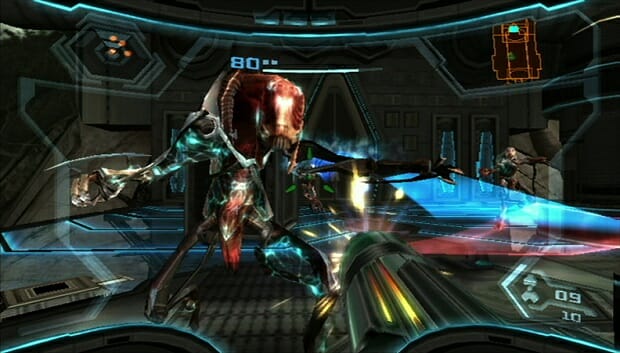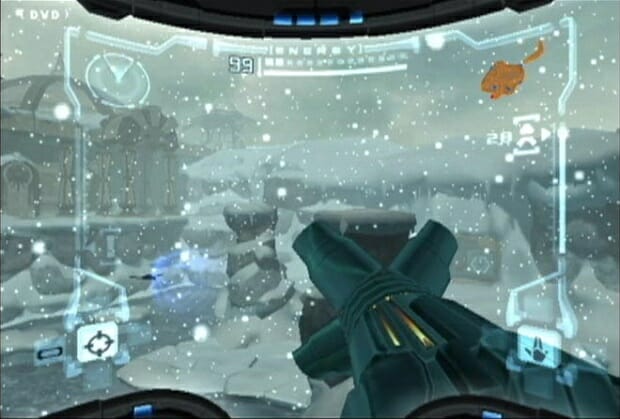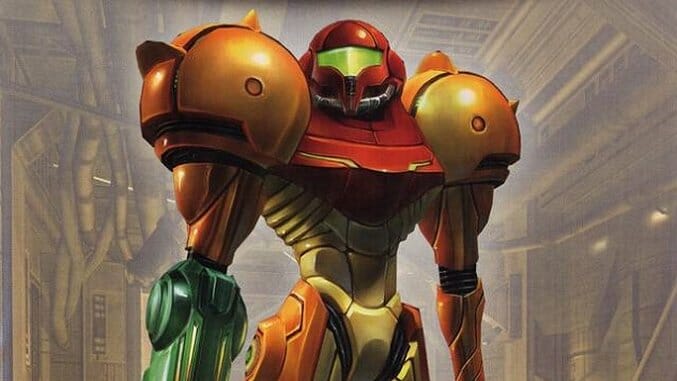
Known for a claustrophobic atmosphere, a taunting style of level design, and for featuring one of the first woman protagonists in videogames, Metroid has been a crucial part of the Nintendo family for almost 40 years. Although never quite as popular as Mario or Zelda, Metroid’s longevity and consistently high level of quality has kept it in the same conversation as those series, and it’s so influential on games as a whole that an entire genre has been named after it. It’s time to celebrate this pivotal series by ranking all of its games.
Metroid’s history is a little bit more complicated than fellow NES-era stalwarts like The Legend of Zelda and Super Mario. Mario and Link have popped up in major, defining games on pretty much every piece of hardware Nintendo has made since the mid ‘80s, whereas Metroid’s hero Samus Aran has taken a couple of notable breaks. Nintendo put the series on ice for eight years after 1994’s beloved Super Metroid, before revitalizing it with the first-person Metroid Prime series and a couple of more retro-minded side-scrolling spinoffs for Game Boy systems. Another break, almost as long, followed after the 2010 flop Metroid: Other M; Samus didn’t appear in a Metroid game for seven years afterward, and when she did, it was essentially a remake of the second game in the whole series.
It took over a full decade after Other M for Samus to return in a major new Metroid game. 2021’s Metroid Dread looked back to the game’s side-scrolling roots while creating perhaps the most frightening Metroid yet, and due to the Switch’s unique nature, it’s the first game on this list that can be considered both a console and a handheld game. Metroid has strong parallel histories on Nintendo’s consoles and handhelds, and the excellent Dread fully tied the two together.
Metroid Prime revitalized the series when it was originally released on Nov. 18, 2002, introducing it to a new generation of players and making it feel fresh and relevant again after slipping into the “cult favorite” realm. Metroid Prime Remastered, a faithful update of the original for the Switch, was one of 2023’s best games. Metroid Prime 4 has been in the works for years, and hopefully will live up to the Metroid legacy whenever it’s released. Until then, here’s every game in the Metroid series, ranked from worst to best.
14. Metroid: Other M
Release Year: 2010
Original Platform: Wii
Other M is widely regarded as the worst Metroid for a number of reasons. Instead of the silent, stoic warrior of most games, Samus is shown as emotionally fragile and conflicted as she deals with the fallout of losing the baby metroid she rescued in Metroid II. Instead of losing her various abilities for mechanical reasons, and forcing the player to gradually unlock them in a way that makes sense in the story, she’s simply forbidden from using most of her powers until her commanding officer gives her the approval. Even if you could look past those narrative missteps, though, you’d still have to contend with the game’s awkward shifting between perspectives. It’s mostly in third person, but you regularly have to slip into a first person view to target specific enemies or find hidden objects, and it often disrupts the flow of the action. It’s also perhaps the most linear Metroid ever, which counteracts the whole point of Metroid. Other M just doesn’t feel like a Metroid most of the time, putting it squarely at the bottom of this list.
13. Metroid Prime Hunters
Release Year: 2006
Original Platform: DS
Hunters suffers from a mismatch of ambition and technology. After the success of the first two Metroid Prime games on the Gamecube, Nintendo understandably wanted to make a spin-off for the DS. It was hard to make a first-person game satisfying with the DS’s control scheme, though. To compound that awkwardness, Hunters made heavy use of the handheld’s touchscreen. So not only was the game hampered by the lack of joysticks, it also asked you to pull a hand away from the buttons to occasionally tap the screen. It looked great for the DS at the time, and successfully brought the atmosphere of the Prime games to a handheld, but it wasn’t exactly fun to play.
12. Metroid Prime: Federation Force
Release Year: 2016
Original Platform: 3DS
Federation Force actually suffers from carrying the Metroid name. If it was released as a new game, without the expectations and legacy of the Metroid series, it probably would’ve been recognized as a fine co-op shooter. It’s similar to Hunters, but irons out some of the control scheme issues that plagued the earlier game, and prioritizes cooperation over competition. Federation Force was met with an extremely hostile reaction from the moment it was unveiled, though, as it replaced the regular series lead, Samus Aran, with generic space marines, and eschewed the classic two-dimensional perspective fans were hoping for in favor of the first-person view of the Prime series. It is far from a great game in its own right, but it’s marginally better than its reputation might lead you to believe.
11. Metroid Prime Pinball
Release Year: 2005
Original Platform: DS
This isn’t a traditional Metroid at all, but the way it incorporates series trademarks into a video pinball game is often very clever. Samus has been turning into a ball since the very beginning of the first Metroid, and it’s almost surprising it took close to 20 years to put her in a pinball game. It might be a goofy aside to the main games, but it’s a fun, weird game in its own right.
10. Metroid II: Return of Samus
Release Year: 1991
Original Platform: Game Boy
The first Metroid sequel deviated from the standard template slightly: instead of several distinct regions that could be accessed and explored as you collected specific power-ups, it had one big world that would gradually expand as you accomplished certain goals. Chalk that up to hardware limitations, along with the repetitive graphics and music. Metroid II felt enough like the first game to appease diehard fans who had worn out their original Game Pak, and actually had a significant impact on the story of Metroid. Its story feeds directly into the next two games in the side-scrolling, non-Prime series.
9. Metroid Prime 2: Echoes
Release Year: 2004
Original Platform: Gamecube
Echoes is a great game. That’s how good the Metroid series is: the ninth best one is still great. Compared to the first and third Prime games, though, it’s just a little bit wanting. Dark Samus isn’t distinct enough beyond the standard “evil doppelganger” enemy type, and the infamous Sky Temple keys feel like padding. It’s also really hard, even for a Metroid. It’s still a gorgeous, smartly written game that expands on the advances made by Metroid Prime.
8. Metroid Zero Mission
Release Year: 2004
Original Platform: Game Boy Advance
This 2004 remake beefed up the original Metroid for the smaller but more advanced tech of the Game Boy Advance. It preserves what made the original Metroid so special while making it more palatable to a modern audience. Some of the peculiarities of the original are ironed away, and various items and mini-bosses are introduced, including an area that’s not in the original game at all. The only reason it’s not higher than the original is because it’s not as groundbreaking.
7. Metroid Fusion
Release Year: 2002
Original Platform: Game Boy Advance
One of two Metroid games released on the same day in November 2002, the handheld Fusion remains a delight today. While its release date buddy Prime rebuilt Metroid in the first-person, Fusion finally gave players a faithful side-scrolling follow-up to Super Metroid. It’s a deep, satisfying return to the type of Metroid everybody knew and loved at the time, but also one that helped set the table for the future, introducing a few concepts and one character that would return in future games. It also helped the Game Boy Advance introduce a novel new way of interacting with consoles: if you bought both Prime and Fusion and connected their hardware together, you could unlock new features in both games.
6. Metroid: Samus Returns
Release Year: 2017
Original Platform: 3DS
This “reimagining” of Metroid II: Return of Samus bears some clear hallmarks of that Game Boy original, most notably in its focus on hunting down and killing a specific number of metroids. It’s so far removed from that game, though, in terms of both its structure and how you play it, that it feels unfair to call it a remake. Basically it takes a handful of ideas from a game released in 1991 and expands upon them to make something that feels fresh and vital in 2017. The most crucial addition is a parry counterstrike that feels nothing like you’ve ever done in a Metroid game before.
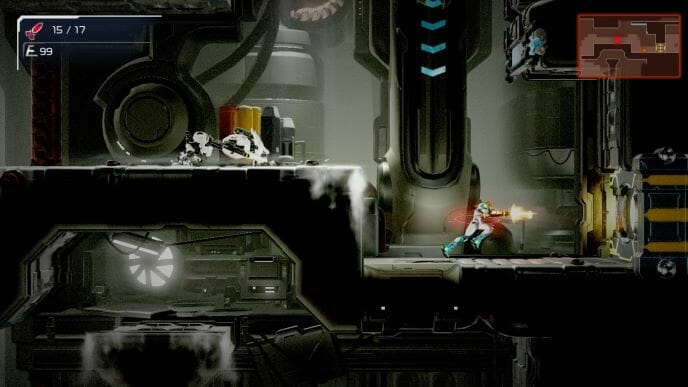
5. Metroid Dread
Release Year: 2021
Original Platform: Switch
Samus’ return to two dimensions restores something essential to the appeal of the original Metroid, and it’s right there in the title: yep, we’re talking about dread. And not just the claustrophobia or paranoia you expect when you’re the only living thing not trying to kill you on the whole damn planet, but legitimate terror as you’re being hunted by an unbeatable foe that will immediately kill you once caught. Being stalked by an E.M.M.I. is almost as frightening as your first encounter with a Metroid in Tourian back on the NES, injecting true horror into a game that ably captures the magic at the heart of this series. Metroid Dread gives the people what they want, resulting in the best Metroid game since the Prime series.
4. Metroid Prime 3: Corruption
Release Year: 2007
Original Platform: Wii
The swan song for the Prime series jumped from the Gamecube to the Wii, finding a wonderful new control scheme along the way. Casting aside the slight narrative and structural mistakes of Prime 2, Prime 3 both returns to the strong environmental storytelling and sense of wonder found in the first Prime game. It also updates the control scheme for the Wii Remote and Nunchuk combo without losing any of its thrilling nature. It uses the Wii remote in common sense ways that make the already bewitching world even more transformative, while also offering us the most beautiful glimpse yet at Prime’s universe.
3. Metroid
Release Year: 1986
Original Platform: NES
The original NES game gets a bad rap today. It’s developed a reputation as a flawed game whose foundations were rebuilt into one of the best series ever through its sequels. That’s selling our old friend short, though. Everything you need in a Metroid game is right there from the very start: a large variety of weapons, a sprawling world with areas that can’t be accessed until you find specific power-ups, a lead character who grows exponentially stronger as the game progresses, and the need for constant back-tracking and free-roam exploration. The lack of a save battery was always a problem, but if you were careful when writing down your passwords it was possible to not lose too much time to that finicky process. When it was released Metroid was just as crucial as The Legend of Zelda at expanding the scope of what games could do, and it remains one of the most important games ever made.
2. Metroid Prime / Metroid Prime Remastered
Release Year: 2002
Original Platform: Gamecube
Fans were wary before Prime came out. There hadn’t been a new Metroid in eight years, since Super Metroid was released, and it felt like Nintendo was exhuming a beloved but discarded franchise solely to cash in on the first-person shooter craze. How could a FPS replicate the exploration and back-tracking vital to a series that had only ever been a 2D side-scroller, fans asked? The answer: shockingly well. Prime felt more like a Metroid than anybody could imagine, and is still eminently playable today, over 20 years after it was released. Prime was also a pioneer of environmental storytelling, relating most of its tragic backstory through the dozens of info screens that can be optionally scanned throughout the game. It’s still the most vibrant version of the Metroid universe, and really, it’s a toss-up between it and number one on this list. And it got a new lease on life with 2023’s excellent Switch update Metroid Prime Remastered.
1. Super Metroid
Release Year: 1994
Original Platform: SNES
Super Metroid didn’t just perfect what the original had innovated. It innovated on its own, introducing some of the most iconic abilities to the game and expanding how we could move within its world. Even when you’re going backwards you’re always going forward, and the addition of save points turns an already addictive formula into something that will literally deprive you of sleep. Metroid Prime might be as successful at its goals as Super Metroid, but Super Metroid gets the nod because of its importance and sheer unassailable quality. It’s probably the closest any videogame has ever gotten to perfection.
Garrett Martin edits Paste’s games and comedy sections. He’s on Twitter @grmartin.
